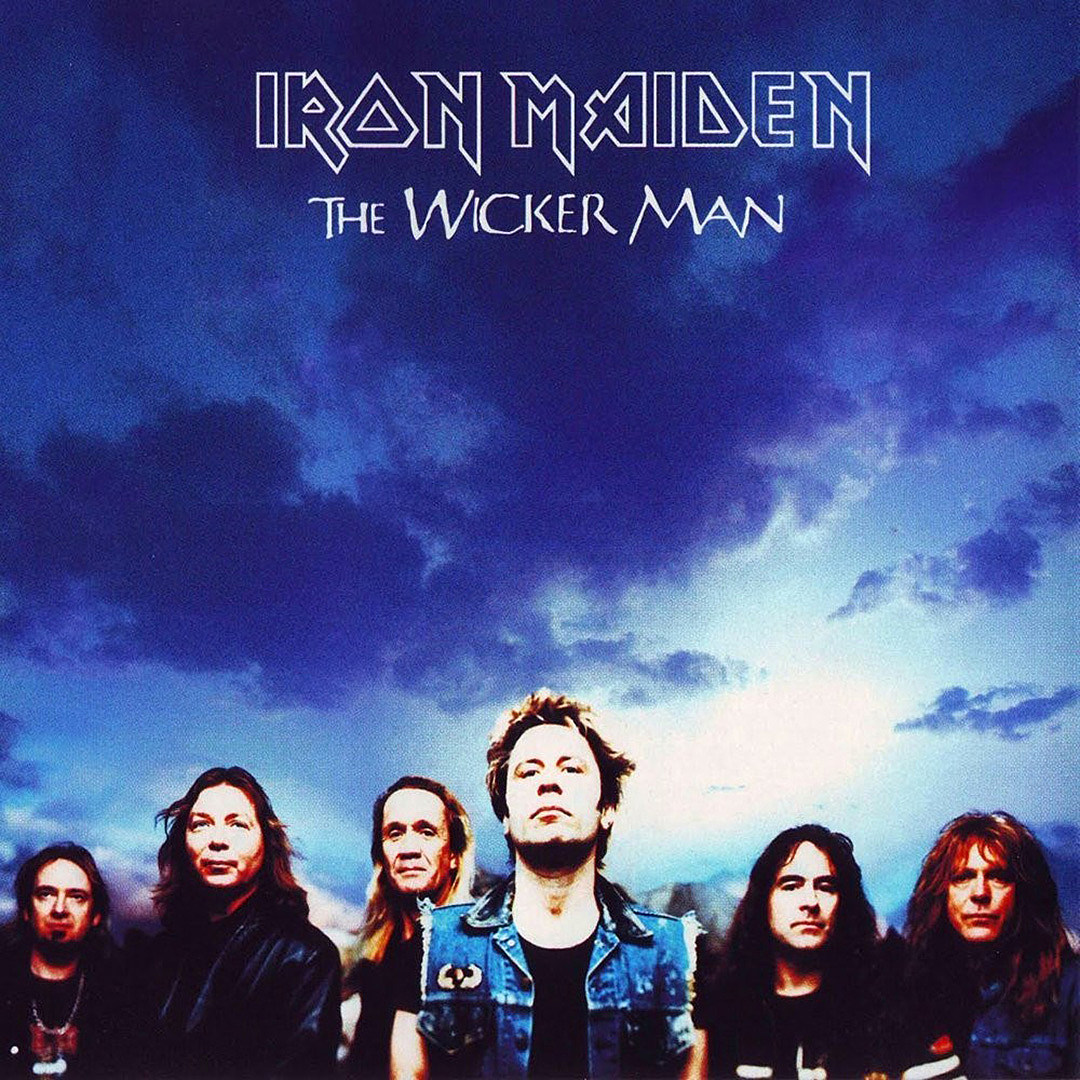
20 Years Ago: Iron Maiden Return With ‘The Wicker Man’
by Martin KieltyBruce Dickinson was clear about what he expected from his return to Iron Maiden. It wasn’t going to be a cash-in and it wasn’t going to be a nostalgia trip. He’d been away for five years, during which the metal icons’ fortunes had faded, and he found his solo adventure less exciting than he’d hoped.
The tensions caused in part by a schedule of almost constant work since the day he joined the band had built a rift between Dickinson and band leader Steve Harris. But six years on, all that was in the past. Singer Blaze Bayley was gone, most of the material on the two albums he fronted were consigned to the past and the new, six-piece Maiden lineup – also featuring returning guitarist Adrian Smith and remaining replacement Janick Gers – had completed the Ed Hunter tour to prove it was still a force to be reckoned with.
Next came the new music. “We’re not sad, old fuckers getting back together to go and make a few bucks,” Dickinson told Billboard in April 2000. “That’s sad and cheesy and not something I’m interested in.” Elsewhere, he told official biographer Mick Wall that his main concern was “whether we would in fact be making a real state-of-the-art record, not just a comeback album.”
Maiden abandoned Harris’ barn, where their previous four albums were recorded, and settled in France with producer Kevin Shirley – a relationship that continues to this day. A&R man John Kalodner suggested the pairing, noting that "using a more modern producer with a legendary band is a real good combination, because it doesn’t sound like some recycled material. … Kevin really kept the record current, but yet it’s still totally Iron Maiden.”
Watch Iron Maiden's ’The Wicker Man’ Video
So much for the words; "The Wicker Man," the first single from the band's 12th album, Brave New World, was intended to be the action. Continuing the band’s stage and studio history, the song was the opening track on the record and at the new concerts. It was also the first cut they worked on together after songwriting sessions were completed.
Under Shirley’s direction they recorded “completely live,” with the aim of capturing a more instant, urgent feel. “What I was trying to get on the lyrics was … just this real positive vibe,” Dickinson noted. “The same vibe I get when I stand onstage in front of all these people and they’re all chanting and singing with you.”
“The Wicker Man” contained some Maiden trademarks, including a sing-along section that almost assured its success. While the U.S. promo version featured variant backing vocals around the chorus line “Your time will come,” the official version maintained an insistent repetition, which only strengthened the mood.
Listen to Iron Maiden's ‘The Wicker Man’ U.S. Promo Version
Every element of the song’s construction was deliberate. “It would be great to expose the younger audience to the derivation of where most of the bands that they like came from, which is Iron Maiden,” Kalodner said. Portrait label VP Pam Edwards added that "for the first time in their career, they’re actually going to get mainstream radio airplay.”
With a series of industry and personal boxes to tick, “The Wicker Man” – inspired by the 1973 British cult horror movie of the same name – included some impressive songwriting. When Maiden headed out on tour later that year, a stop in New York’s Madison Square Garden featured support appearances by Slayer, Korn and Nine Inch Nails.
“If there was anybody out there who doubted we were serious about this," Dickinson warned, "think again.”
See Iron Maiden Among Rock’s Most Underrated Albums
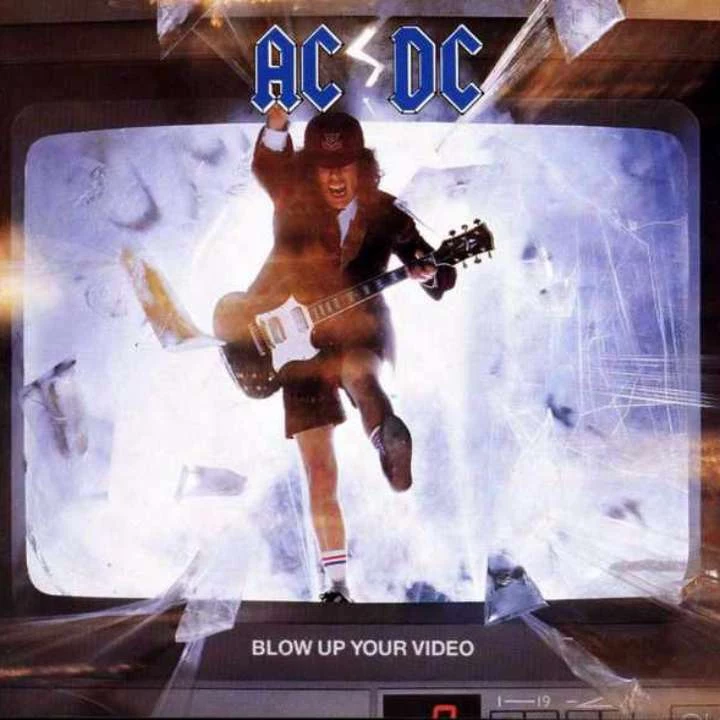
AC/DC, 'Blow Up Your Video'
The early production team of Harry Vanda and George Young returns to help AC/DC make their best album since 1981's 'For Those About to Rock' – and a final pair of original U.K. Top 20 songs in "Heatseeker" and "That's the Way I Wanna Rock 'n' Roll." 'Blow Up Your Video' is more top heavy than their glory-years albums, but it gamely recalls what made AC/DC great in the first place.

Aerosmith, 'Done With Mirrors'
Their five-times platinum follow-up 'Permanent Vacation' gets all the love, but Aerosmith's first album with Joe Perry and Brad Whitford in almost six years is actually the better album. In fact, you'd have to go back a decade to 'Rocks' to find one that, well, rocks more.
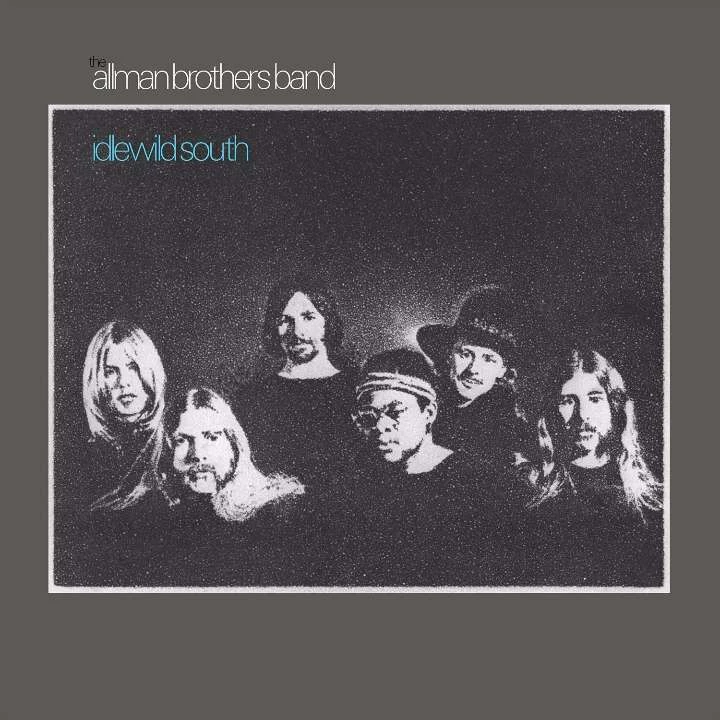
The Allman Brothers Band, 'Idlewild South'
The Allmans would have their big breakthrough the year after their second album was released in 1970. 'At Fillmore East' made them stars, but 'Idlewild South' gave them the confidence to focus their live sets on their assets. The band was closing in on greatness here ("Midnight Rider" and "Memory of Elizabeth Reed" make their debuts), and it was only a matter of time before the rest of the world caught on.

Bad Company, 'Burnin' Sky'
Things moved so quickly for Bad Company that their third album, 1976's 'Run With the Pack,' was rushed to the point where its most memorable song was a cover of an old Coasters hit from the '50s. For the follow-up, the band returned to its harder roots. 'Burnin' Sky' wasn't as successful as Bad Company's first three albums, but the group's lean approach here would mark the final time the original lineup sounded this tough.

The Band, 'Northern Lights, Southern Cross'
The Band were nearing the end of their classic run, with their last original album going back to 1971's 'Cahoots.' 'Northern Lights, Southern Cross,' from 1975, followed a successful tour with old boss Bob Dylan and a less-than-successful album of '50s covers. It includes some of their best songs -- "Ophelia," "Acadian Driftwood" and, especially, "It Makes No Difference," among them. They had one more album left in them before their last waltz.

The Beatles, 'Let It Be'
There are people out there who really don't like the Beatles' final album and for one simple reason: Phil Spector's occasionally intrusive embellishments. But look beyond the strings, backup singers and glop, and you'll discover some of the group's best late-period songs. There's a real sense of looseness and roots-digging on 'Let It Be.' You just have to work a little to hear them, but it's worth the effort.

Jeff Beck, 'Beck-Ola'
'Truth' gets all the accolades for bringing together Jeff Beck, Rod Stewart and Ronnie Wood, but the second album by the Jeff Beck Group is almost as good. Like his former Yardbirds bandmate Jimmy Page, who would debut his new group Led Zeppelin the same year as 'Beck-Ola''s 1969 release, Beck outfitted blues and R&B with a harder, more rock-oriented approach, and the results are often stunning.

Black Sabbath, 'Sabotage'
Black Sabbath were in the middle of an ugly lawsuit with their former manager when they recorded their sixth album. The process took a toll on them, which is reflected in the record's dark and often murky grooves. It all eventually weighed on the band, which gave singer Ozzy Osbourne the boot in a few years. But 'Sabotage' sounds like one last chance at keeping it together, with songs like "Symptom of the Universe" working out frustrations at breakneck speed.

Blue Oyster Cult, 'Imaginos'
1988's 'Imaginos' has a complex history. It was originally intended as a solo album by drummer Albert Bouchard seven years earlier. But the band's record company shelved the project, which was supposed to be the first part of a trilogy. Over the years, outsiders – including Joe Satriani and the Doors' Robby Krieger – were brought in to rework the songs, which producer Sandy Pearlman stitched together with a story he had written about aliens. It's kind of a mess, but a glorious mess at times – one of Blue Oyster Cult's most intriguing works. It bombed, though, and the band was dropped by its label.

Bon Jovi, 'Keep the Faith'
After the huge one-two punch of 'Slippery When Wet' and 'New Jersey,' fans expected another rousing set of anthem-sized songs from Bon Jovi. But they grew up in the four years between albums, and 'Keep the Faith' is a more straightforward rock 'n' roll album with little of the pop sheen that graced their big hits. It's a mature turning point from which there was no turning back.

Boston, 'Don't Look Back'
Following the massive success of their self-titled 1976 debut, Boston's second album – which arrived two years later and seemed like an eternity at the time – is often overlooked except for its hit title track. Too bad, because 'Don't Look Back' is cut from the same cloth as the first album, with out-of-this-world riffs, choruses and production overflowing from the grooves.

David Bowie, 'Diamond Dogs'
Post 'Ziggy Stardust' and 'Aladdin Sane,' Bowie was sidelined by an underwhelming covers album which sank some of the buzz for 1974's 'Diamond Dogs,' a glitzy, glammy and strutting rock 'n' roll album that comes on like a big wet kiss to his most loyal fans. Bowie was just a few months away from another reinvention – this time, as an American soul singer before his legendary Berlin phase – and 'Diamond Dogs' sounds like a victory lap for his superstar rock 'n' roll era.
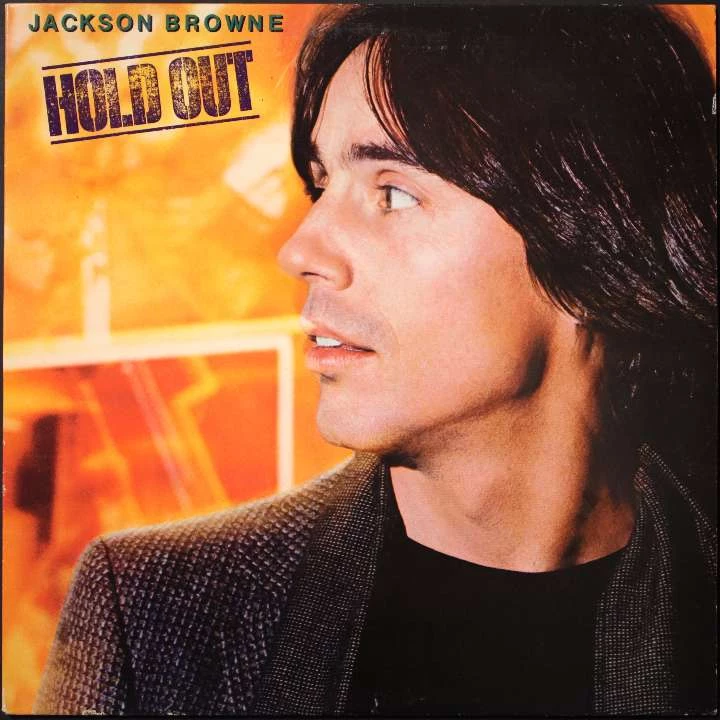
Jackson Browne, 'Hold Out'
Maybe Jackson Browne got too Jackson Browney for his own good by 1980's 'Hold Out,' his only No. 1 album. After being hailed as one of the best songwriters of his generation, and checking in with his biggest-selling LP, 'Running on Empty,' last time out, Browne's sixth album was considered a letdown. The opening "Disco Apocalypse" maybe summed it up for some fans, but dig deeper – to cuts like "That Girl Could Sing" and the epic, eight-minute closer "Hold On Hold Out" – and you'll discover some loose gems.

The Cars, 'Panarama'
Lost in the middle of the Cars' first two albums and the commercial rebirth of the early '80s, their third album 'Panorama' is, in a way, their weirdest record – a conscious move away from the pop-driven New Wave that made them famous. Instead, the band goes down a more experimental path here, getting darker and deeper than they did on previous outings. It baffled many fans, but the Cars were back to their old sound a year later for 'Shake It Up.'

Cheap Trick, 'Cheap Trick'
Everything that made Cheap Trick big by the end of the '70s was already in place on their 1977 debut. They'd just fine-tune everything by the time 'Cheap Trick at Budokan' made them one of the hugest bands on the planet. They're a more primal group here, with the guitars slashing more than they would on subsequent albums. Cheap Trick were a work in progress during those early years; this is a solid start.

Chicago, 'Chicago VII'
Chicago's first four albums were all double LPs or more. But in the three years leading up to 1974's 'Chicago VII' they had scaled back a bit as they got bigger. They went all out here, making room on this double album for some epic jams alongside hit singles – 'Chicago VII' yielded three of them: "(I've Been) Searchin' So Long," "Wishing You Were Here" and "Call on Me."
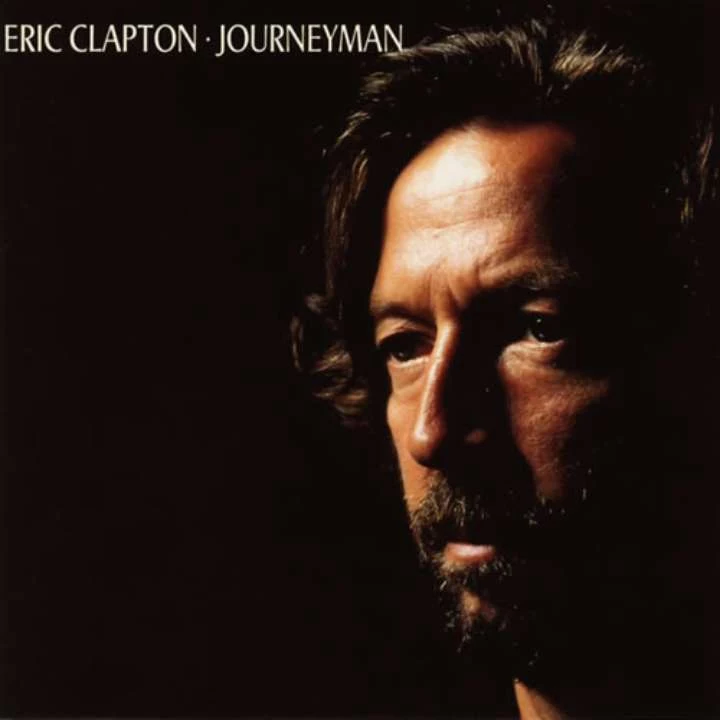
Eric Clapton, 'Journeyman'
Clapton ended the '80s, not a great decade for him, with a return to form. Newly sober and excited by getting back to his roots, he makes 'Journeyman' the link between the overly stylized albums of the '80s and his revitalization in the '90s. The old blues and R&B covers are great, but the modern-sounding "Pretending" and "Bad Love' aren't bad either.

The Clash, 'Give 'Em Enough Rope'
Situated between their explosive debut and the epic 'London Calling,' no wonder the Clash's second album is rarely talked about these days. 'Give 'Em Enough Rope' is a test of sorts of the full dive the band took outside of its punk confines a year later on 'London Calling.' Polished, professional and still a push forward in their evolution, it's the link between their two best albums.
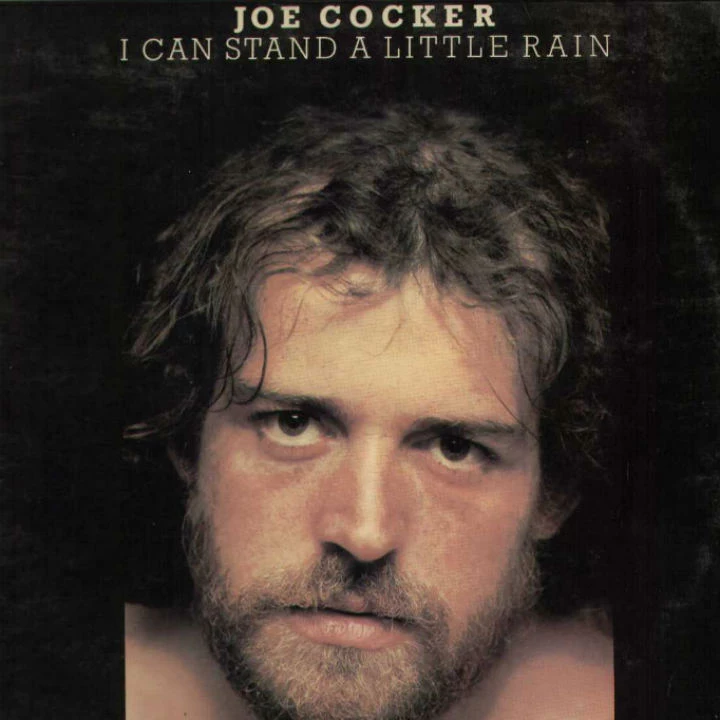
Joe Cocker, 'I Can Stand a Little Rain'
Joe Cocker was a star following his career-defining Woodstock performance and a trio of albums, including one based on his historic Mad Dogs & Englishmen tour. But he hit a wall with 1972's 'Joe Cocker.' He regrouped, and two years later he emerged with an album filled with expert session players, a collection of great cover songs and his biggest hit, "You Are So Beautiful." 'I Can Stand a Little Rain,' which just missed the Top 10, was his last Top 40 album.

Phil Collins, 'Hello, I Must Be Going!'
Collins' second solo LP didn't have the weight of an impending divorce steering it like he did with his 1981 debut, 'Face Value.' So he instead focused on sharpening the R&B elements of his hooky pop music. 'Hello, I Must Be Going!' had an effect on Collins' music going forward, including his gig with Genesis, who became increasingly more pop-driven following this album's commercial success. By the time of Collins' next solo LP three years later, 1985's 'No Jacket Required,' he was one of the biggest artists in the world.

Alice Cooper, 'From the Inside'
Cooper's fourth solo album followed his stay in a sanitarium for alcohol abuse. It's his most personal LP, a concept album based on the people and things he saw while sobering up. The band is great – guitarist Dick Wagner leads a group that includes a couple members of Elton John's group as well as John's songwriting partner Bernie Taupin chipping in – but it's Cooper's dedication to the material that makes it sting.

Cream, 'Goodbye'
Stitched together from live recordings and the final sessions by the band, which had broken up a few months before the album's release, 'Goodbye' is a fitting final chapter by the combustible Cream. Once again they rework some old blues, show off just how great they were together when they got along and contribute one last classic to their catalog: "Badge," which was co-written and features guitar by Eric Clapton's friend George Harrison, whose own band was also getting ready to say goodbye.

Credence Clearwater Revival, 'Bayou Country'
With two other great albums ('Green River' and 'Willy and the Poor Boys') out in 1969 and another one ('Cosmo's Factory,' perhaps their best overall work) arriving eight months later, Creedence's second album tends to get lost. But 'Bayou Country' is where the greatness starts, with John Fogerty penning his first true classic, the breakout "Proud Mary."

Crosby, Stills, Nash & Young, 'Daylight Again'
Five years after their 1977 reunion album, Crosby, Stills & Nash tried it again with their fourth LP, which yielded a pair of hit singles in "Wasted on the Way" and "Southern Cross." The project started as an LP by Stephen Stills and Graham Nash, until David Crosby joined at the last minute and contributed one of his new songs. Six years later, Neil Young joined them for the first CSNY record since 1970.

Deep Purple, 'Burn'
Deep Purple switched up their lineup again in 1974 for their eighth album, bringing in David Coverdale and Glenn Hughes, who gave the band some new life. The newcomers also added some R&B elements to the band's usual hard-rock mix, energizing a group that had become stagnant on the preceding 'Who Do We Think We Are.' Like most things Deep Purple, it wouldn't last for long, but in the group's evolving history, it's a change worth savoring.

Def Leppard, 'Yeah!'
Def Leppard broke a four-year hiatus with an album of covers in 2006, and, if nothing else, it proved they had great taste in music. They cover the Kinks ("Waterloo Sunset"), Roxy Music ("Street Life"), David Bowie ("Drive-In Saturday") and Mott the Hoople ("The Golden Age of Rock 'n' Roll"). The fact that they chose more obscure cuts for 'Yeah!' makes this one of the rare cover LPs worth hearing.

Dio, ' Strange Highways'
Ronnie James Dio and Vinny Appice returned to Dio with a head of steam (and one leftover song, 'Hollywood Black') from their recent Black Sabbath reunion. Add in new guitarist Tracy G, who sounds something like early Dio sideman Vivian Campbell, and you end up with the group's best album since 'Last in Line.'
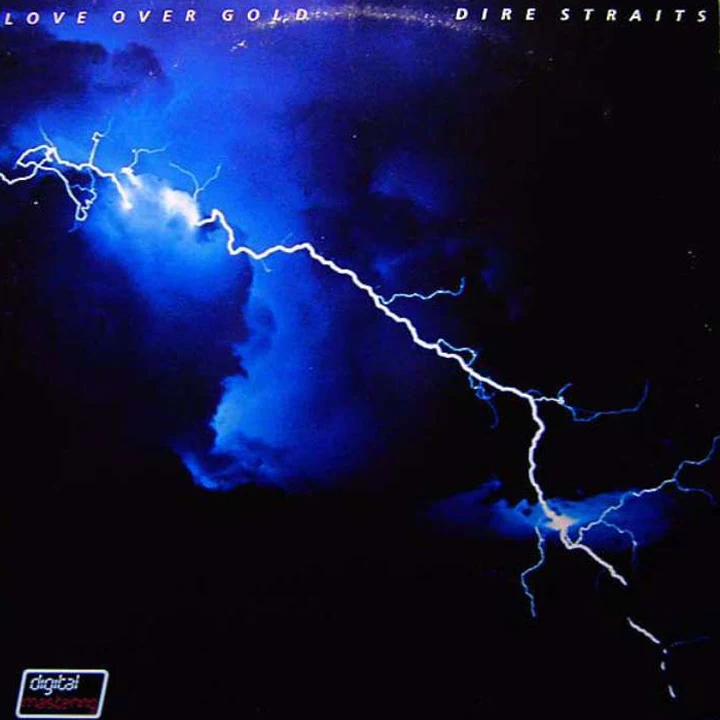
Dire Straits, 'Love Over Gold'
The moment where Dire Straits became an art-rock band. For the fourth album from the Mark Knopfler-led group, the focus was on mood and texture rather than songs. The 14-minute opener "Telegraph Road" is the sprawling centerpiece, but the six other songs follow suit. With their next album, 'Brothers in Arms,' three years later, Dire Straits became one of the biggest bands in the world.

The Doobie Brothers, 'Stampede'
The Doobies were just an album away before Michael McDonald changed their fortunes. Not that they were doing too bad before him. 'Stampede' stretches out more than any Doobie Brothers album before or after it, setting them up for the new directions McDonald would take them in with 1976's 'Takin' It to the Streets.'

The Doors, 'Morrison Hotel'
Following the mainstream push of 'Waiting for the Sun' and the horns-and-strings excesses of the soggy 'The Soft Parade,' the Doors' fifth album is often neglected in the wake of 'L.A. Woman''s triumphant return. But the seeds of the band's last album with Jim Morrison are planted on 'Morrison Hotel,' a return to to the blues-soaked cries and howls that fueled their debut.

Bob Dylan, 'New Morning'
Sandwiched between the dismal 'Self Portrait' and the even worse 'Dylan' (plus the throwaway 'Pat Garrett and Billy the Kid' soundtrack), 'New Morning' usually gets lost in the sewage. But even though it shares some similarities with 'Self Portrait,' Dylan sounds committed here, and the lively performances (by himself and his spirited backing group) make it one of his best neglected records.

Eagles, 'Desperado'
The budding country-rock group's second album was a concept record about the Old West, with the four Eagles playing the role of an outlaw gang. The theme holds together well, thanks to songs like "Tequila Sunrise," "Saturday Night" and the title track, ballads that showcased the band's glorious harmonies and growing songwriting skills. They'd get bigger with each release until topping out with 'Hotel California' three years later. 'Desperado' is a quiet triumph.

Electric Light Orchestra, 'Zoom'
Jeff Lynne resurrected ELO after 15 years, and he brought along some of his friends to help out, including Ringo Starr and George Harrison, a Traveling Wilburys bandmate. 'Zoom,' from 2000, is basically a Lynne solo album, but it includes all of ELO's hallmarks. Still, the record crashed and a tour scheduled in support of the LP was canceled.

Emerson, Lake & Palmer, 'Trilogy'
The preceding 'Tarkus' was Emerson, Lake & Palmer's masterpiece, but 'Trilogy' is one of the group's most focused outings. The first side is the short, snappy stuff, including a rousing take on Aaron Copland's "Hoedown"; Side Two is where they stretch into prog's deepest territories.

Fleetwood Mac, 'Tusk'
Fleetwood Mac were coming off one of the biggest selling albums ever, so no surprise expectations were high. But a two-year wait and a double album of Lindsey Buckingham's weird studio exercises were enough to push some fans out of the band's corner. Their loss. 'Tusk' is one of the period's most brilliantly crafted LPs, a masterwork of studio ingenuity and solid hooks. Plus, Christine McVie and Stevie Nicks checked in with some of their best-ever songs too. A classic waiting for rediscovery.

Foreigner, 'Head Games'
Foreigner's third album, like a lot of bands' third records, kinda got lost in the shuffle. Nestled between the crucial second LP and the massively successful fourth one, 'Head Games' can seem like business as usual. And in a way, it is. But that doesn't discount classic tracks like "Dirty White Boy,""Women" and the title song.
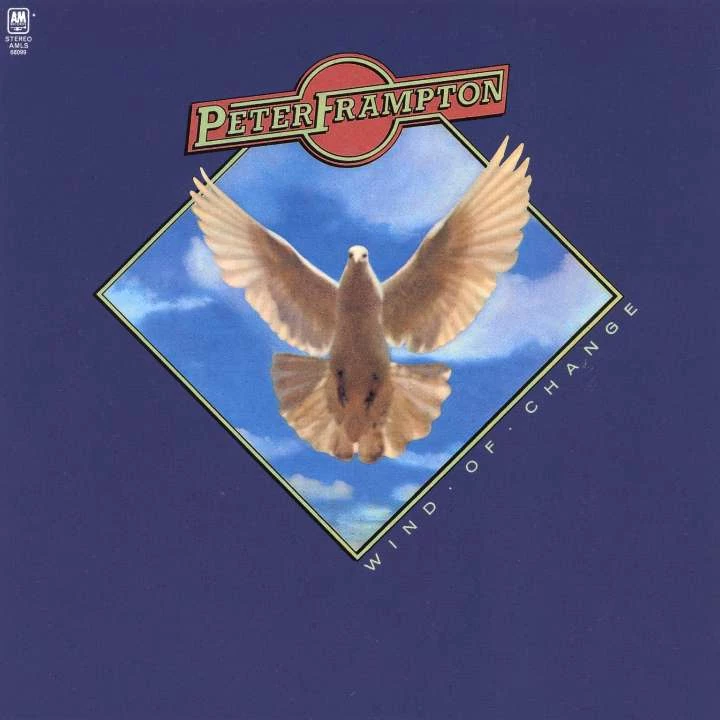
Peter Frampton, 'Wind of Change'
Frampton's first solo album wasn't exactly what fans expected from the former Humble Pie guitarist. For one thing, many of 'Wind of Change''s songs are acoustic, meaning the flashy guitar pyrotechnics were kept to a minimum. Plus, the tracks emphasized melodies over riffs – another difference from the Humble Pie days. But the album's relatively reserved tone makes for a bold start to a solo career that would gain more traction over the next few years.

Peter Gabriel, 'Us'
Six years after 'So' finally made Gabriel a worldwide star, he returned with 'Us,' an album that would forever fall under the shadow of its monster predecessor. It didn't help that the playful tone of 'So' was replaced by more personal issues troubling the singer at the time. All of this amounted to a giant hurdle for Gabriel to clear. But 'Us' is one of his best-sounding albums, and its deeper, darker themes make for a rich listen.

Genesis, 'A Trick of the Tail'
Genesis' first album without Peter Gabriel doesn't sound a whole lot different than their last few with him. The band was still a few years away from its big commercial move, so the focus here is on long songs, tricky time signatures and an overriding theme about an elusive and fabled woodland creature. Phil Collins proves to be a natural stepping into the frontman role.

Grateful Dead, 'Aoxomoxoa'
Like the Dead's previous album, 'Anthem of the Sun,' 1969's 'Aoxomoxoa' is a tapestry of tape manipulation, studio tricks and mind-expanding experiments that hold together better as a piece than separately, though two of the band's early classics – "St. Stephen" and "China Cat Sunflower" – are here. A few months later, the legend-building 'Live/Dead' took it to the next stage.
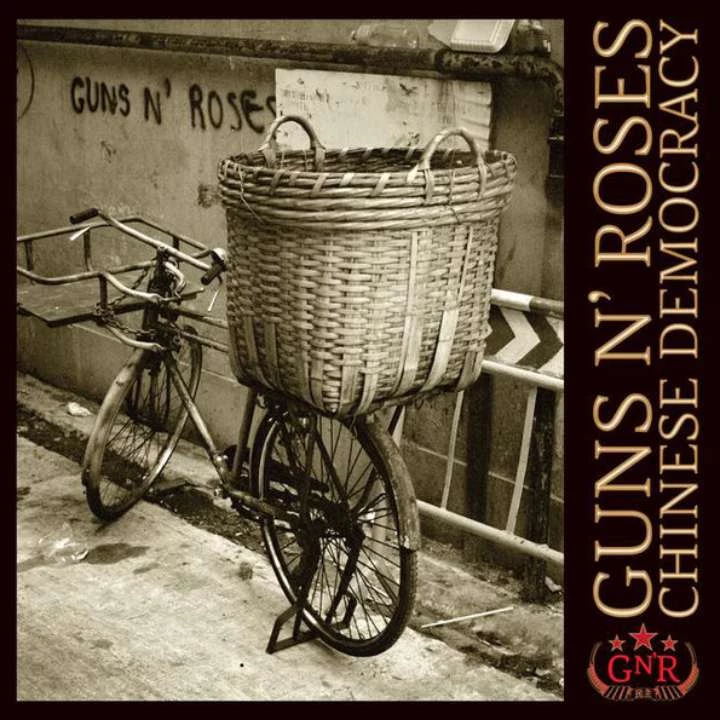
Guns N' Roses, 'Chinese Democracy'
It took 15 years for Guns N' Roses – with only Axl Rose remaining from the classic lineup – to release 'Chinese Democracy.' Expectations were high ... or low, depending on how you felt about the long delay. Either way, it's a better record than the last one – the creaky covers record 'The Spaghetti Incident?' – and tougher at times than you'd expect. And despite the decade of recording that went into it, 'Chinese Democracy' sounds remarkably cohesive.

Sammy Hagar, 'I Never Said Goodbye'
Hagar returned to solo work in order to finish out his pre-Van Halen recording contract, but this time the pressure was off. 'I Never Said Goodbye' found a suddenly loose Hagar trying new things musically, while addressing far more mature, personal themes. One of the singles, 'Eagles Fly,' was earlier rejected by Van Halen but eventually made its way into their set anyway after being included here.

George Harrison, '33 1/3'
This return-to-form studio project somehow did worse than either of its predecessors, likely because Harrison had previously drifted so far away from the things that fired his turn-of-the-'70s successes as a songwriter. Two Top 40 hits quickly telegraphed a smart change in the direction, yet the focused, upbeat and approachable '33 1/3' languished. It deserved – and deserves – better. This is his next great solo album after 'Living in the Material World.'

Heart, 'Red Velvet Car'
With 2004's 'Jupiters Darling,' Heart returned to their hard-rock roots, but not too many people heard the record. Six years later they came back with an even tougher set of songs and hit the Top 10. 'Red Velvet Car' was a Heart album for fans who weren't too crazy about their mid-'80s mainstream hits. It even featured a Geddy Lee cameo.

Billy Idol, 'Charmed Life'
Four years after Idol coasted on his 1986 hit 'Whiplash Smile,' he entered the '90s with a new band and a new outlook. "Cradle of Love" was the hit, and a cover of the Doors' "L.A. Woman" was the misfire, but in between, 'Charmed Life' sounds like a rebirth for Idol, who was involved in a serious motorcycle accident the same year the album was released.

Iron Maiden, 'Seventh Son of a Seventh Son'
Already known for stirring grandiosity, Iron Maiden went even bigger here – turning back toward progressive concepts by unleashing a series of inventive time signatures, while adding keyboards and a larger concept. That might have been why 'Seventh Son' didn't match its predecessor's sales in the U.S. But critical estimation of this project, which history later shows us was the last from the band's original classic formation, has rightly continued to rise.

Jefferson Airplane, 'Crown of Creation'
Jefferson Airplane's most psychedelia-shaded LP, 'Crown of Creation' often gets lost between the two albums that bookend it, 'After Bathing at Baxter's' and 'Volunteers.' Released in 1968, as the Summer of Love gave way to something murkier, the album embraces the hippie dream, but there's a darker, and druggier, undercurrent to the music, among the most complicated in the Airplane's catalog.

Jethro Tull, 'Stand Up'
'Aqualung' catapulted Jethro Tull to fame a couple years later, but the foundation of that album's sound – folk rock filtered through something approaching prog, with flute solos guiding the way – was shaped on their second album in 1969. They began to find their voice on 'Stand Up,' especially on the instrumental centerpiece "Bouree," based on a Bach piece, which became a concert favorite as the band got bigger.

Billy Joel, 'The Nylon Curtain'
After two album of jazz-inflected soft-rock and then a straight-up rock 'n' roll record, Billy Joel got political on his 1982 LP. 'The Nylon Curtain' simmers with Reagan-era hopelessness and rage, whether it's the discarded factory workers of "Allentown" or the scarred Vietnam vet at the center of "Goodnight Saigon." Joel rarely got this much in your face; 'The Nylon Curtain' proves he was as adept at that as he was his other ventures.

Elton John, 'Elton John'
It would be a few years before Elton John became a massive star, but the formula was already in place on his second album. He and Bernie Taupin check in with their first real classic, "Your Song," and spin plenty of melodic gems ("Take Me to the Pilot," "Border Song") that would set them up for the superstardom that was right around the corner.

Journey, 'Departure'
Like both of its predecessors, 'Departure' sold three million copies. The arrival of Jonathan Cain, however, created a new alchemy that would quickly dwarf those respectable numbers – and 'Departure' itself – into the '80s. Still, the album begins with the timeless radio hits “Any Way You Want It” and “Walks Like a Lady,” before settling into a mature mix of tracks that balanced the elegance of “Good Morning” and “Stay Awhile” with the ferocious stutter of “Line of Fire.” The touchingly hopeful “Someday Soon” also finds Steve Perry trading vocals with the soon-to-leave Gregg Rolie for a final time.
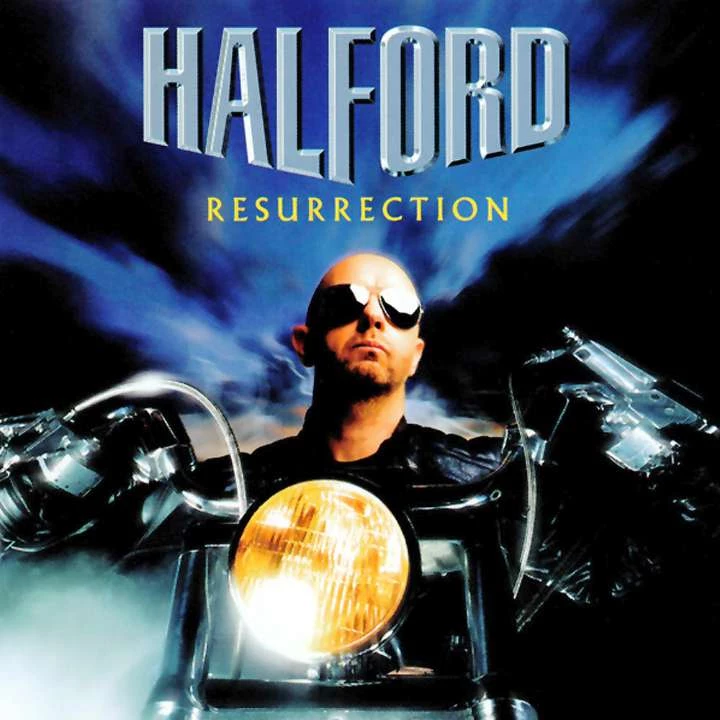
Halford, 'Resurrection'
The best Judas Priest album you never listen to was put out by departed singer Rob Halford – who finally re-embraced non-hybrid metal as the '00s dawned. The results amounted to a complete return to form. In fact, "Night Fall" sounded more like classic Priest than their album 'Jugulator' from that time. Halford also resurrected Judas Priest's speedier 'Painkiller'-era sound on "Drive" and "Saviour." By 2005, he was back in the band.

Kansas, 'Power'
Kansas had slipped out of the Top 40, and then disbanded all together, before reuniting with classic-era singer Steve Walsh for 'Power' in the mid-'80s. The resulting album walked a fine line between the old and new, as heard on the terrific "Silhouettes in Disguise." There is plenty of period-specific melodic sheen, but Walsh is in terrific voice – and everything is goosed along by a series of interesting contributions from new guitarist Steve Morse.

The Kinks, 'Muswell Hillbillies'
The Kinks didn't build on the commercial success of "Lola" from the previous year, instead releasing an album that stalled outside the U.S. Top 50 – and somehow failed to chart in the U.K. at all. Yet this is one of Ray Davies' most deeply layered, socially trenchant and often genuinely humorous albums ever. Nobody bought it, for whatever reason, but they certainly should have.

Kiss, 'Unmasked'
Credited to the band's original lineup, this represented another step toward the end of Kiss' celebrated early era. (Peter Criss was absent from the drums for a second consecutive album, despite having completely recovered from a car accident.) Yet, the polished, endlessly approachable 'Unmasked' wasn't without its considerable charms. Kiss showed they'd have no trouble transitioning into a new decade where glam and pop were growing.

Led Zeppelin, 'Presence'
'Presence' was a showcase for Jimmy Page and John Bonham, offering Zeppelin a chance to return to their bawdy early sound. Page unleashes a torrent of layered grooves, while Bonham brings his sticks down with teeth-splintering force on gems like the galloping 'Achilles Last Stand' and the coiled 'Nobody's Fault but Mine.' After a period of furious invention, and no small amount of rock-star decadence, the grimy grooves of their initial period have a renewed sense of force and danger here.

John Lennon, 'Rock N' Roll'
Lennon's return-to-roots album was mired in trouble, including a long release delay because producer Phil Spector walked off with the tapes. Because 'Rock 'n' Roll' is made up of cover songs, it's often viewed as the throwaway album of Lennon's career. But it's one of his best and most committed, thanks to the loose and boozy spirit that guided the former Beatle and his backing band through the sessions.

Lynyrd Skynyrd, 'Second Helping'
Their debut featured a jukebox full of familiar songs, and their third became Lynyrd Skynyd's first-ever Top 10 album. So, where does that leave 'Second Helping,' which seems to have no other real calling card for many people after its ubiquitous lead-off song "Sweet Home Alabama"? Actually, as perhaps their best-written album ever. Ronnie Van Zant was at the top of his game on these deep-cut originals, and the band breathes fiery new life into a J.J. Cale cover too.

Paul McCartney, 'Chaos and Creation in the Backyard'
The most serious and unfussy album ever from the typically winking McCartney. That consistency in tone and quality might lead to distraction for those enamored with his more obvious quirks. But 'Chaos' only grows into a richer experience with subsequent listens. The result is not only a modern-period success; it's one of McCartney's very best albums of any era.
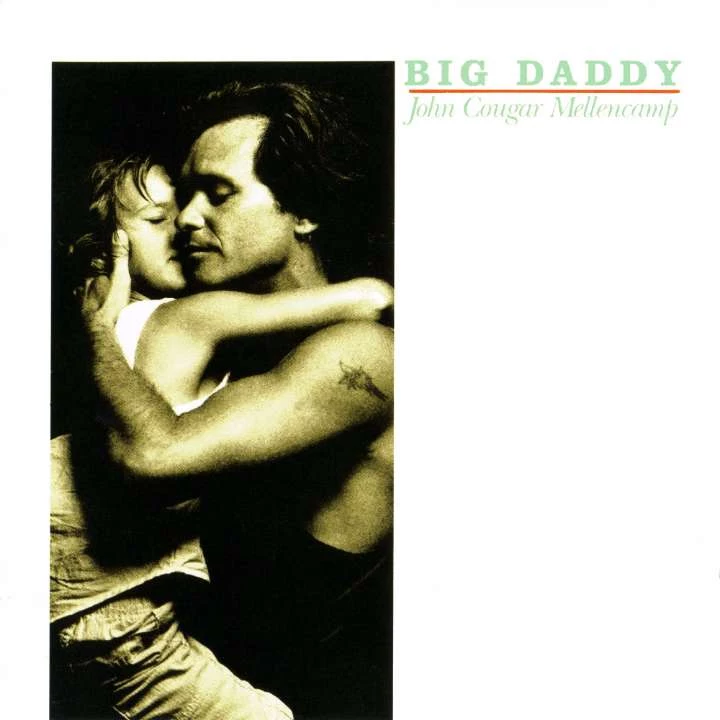
John Mellencamp, 'Big Daddy'
A forebear to the stripped-down, more serious-minded recordings of John Mellencamp's most recent period. At times, 'Big Daddy' echoed the folky inclinations of the preceding 'The Lonesome Jubilee,' but Mellencamp was moving toward darker themes and deeper ambitions. That began with his name. 'Big Daddy' was the last to include the “Cougar” moniker that had been thrust upon him as an up-and-coming rocker.
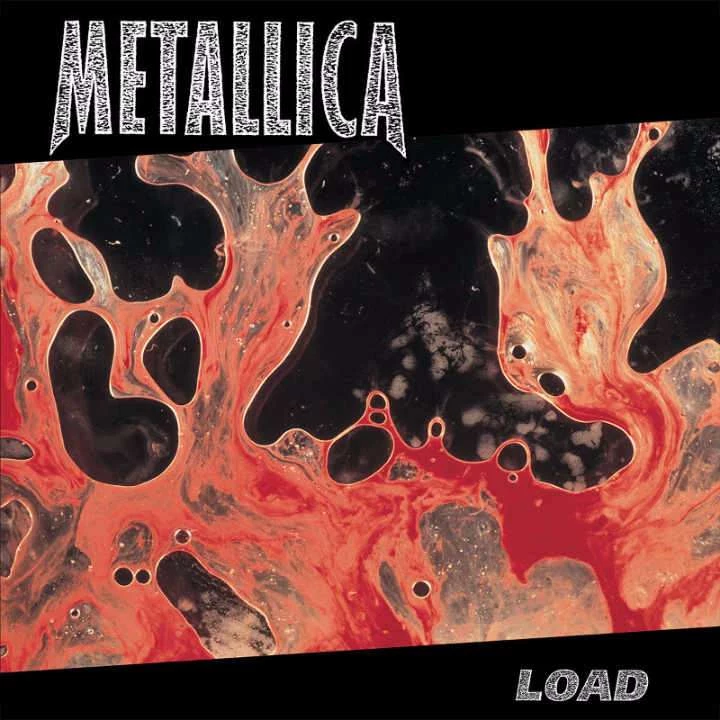
Metallica, 'Load'
After stripping their sound down for the Black Album, Metallica let loose a little on 'Load,' adding a shaker of Southern rock spice to tracks like "Ain't My Bitch" and "2 X 4." Though this new blues-inflected style came as a shock to their older, more hardcore fans at the time, 'Load' can be seen now as a thrilling display of versatility – and proof that Metallica could move beyond their thrash roots.

Joni Mitchell, 'Hejira'
'Hejira' suddenly found Joni Mitchell outside the Top 20 in her native Canada for the first time since the '60s. Reason: She was moving even further into fusion styles alongside jazz guitarist Larry Carlton and the extraordinary bassist Jaco Pastorius. Still, an album featuring some of her most delicately conveyed character portraits should have provided a sturdy foothold for her old-line fans. After that, repeated listenings tend to draw us ever more deeply into her deceptively engrossing rhythms and lush, offbeat melodies.

Monkees, 'The Birds, the Bees and the Monkees'
Call this their White Album. The first Monkees project that failed to reach No. 1 is also the most radically diverse LP ever from these newly emboldened former TV stars. Typically recorded in separate sessions, Micky Dolenz (rock and soul), Michael Nesmith (country rock) and Davy Jones (pop and adult-contemporary balladry) were beginning to develop separate musical identities. As such, this album can initially feel like a bumpy ride, but keep listening: What you're hearing is the Monkees becoming something more than the pejorative Pre-Fab Four.

The Moody Blues, 'The Present'
Designed in the manner of the Moody Blues' chart-topping comeback smash 'Long Distance Voyager,' this follow up instead disappointed – landing outside the Top 25. Chalk this commercial stumble up to a more emotionally reserved set of songs, with no out-sized single like "The Voice" to propel things along. In truth, though, that's actually more in keeping with their legacy work. As with those older albums, 'The Present' sometimes takes a while to sink completely in, but it sticks with you longer.
Van Morrison, 'Veedon Fleece'
Largely forgotten for some reason, Van Morrison's 'Veedon Fleece' updates the cathartic, free-form narratives that propelled 'Astral Weeks' with exciting flourishes of Celtic sounds. (That's fitting since this album was written over three quick weeks while Morrison was vacationing in Ireland after suffering through a divorce.) He's rarely sounded so raw, and the new musical setting works in intriguing counterpoint.
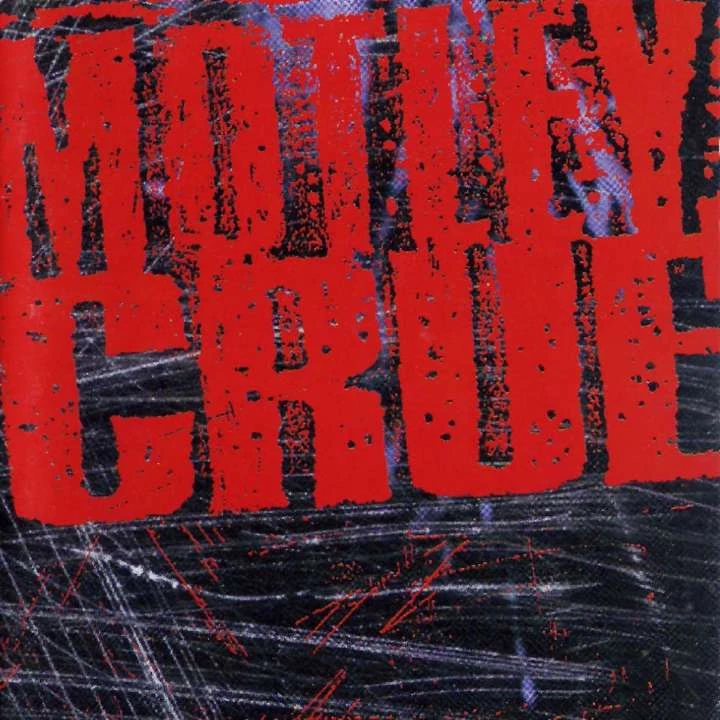
Motley Crue, 'Motley Crue'
Freed to compose and play in an exciting two-guitar format with a far more introspective new singer, Motley Crue's first album without Vince Neil was as gutsy as it was apparently uninteresting to their core fan base. It also arrived in a period when grunge was becoming more in popular. As a result, 'Motley Crue' failed to go platinum, a first for the group, and Neil soon took over again from John Corabi.
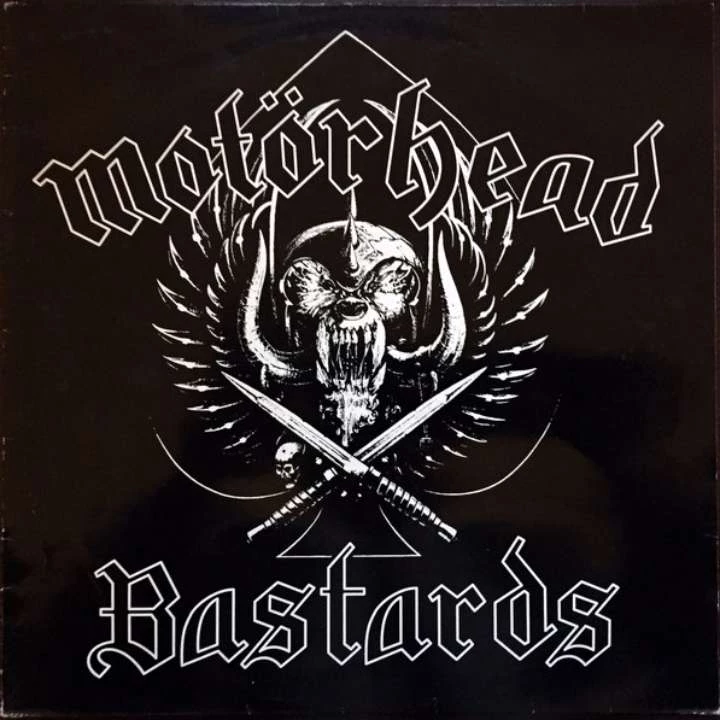
Motorhead, 'Bastards'
'Bastards' failed to chart in either the U.K. or in the U.S, but that's no reflection on this complete comeback after 1992's deflating 'March or Die.' Motorhead sound like Motorhead again, after a wrongheaded attempt at softening their approach in the hopes of gaining major-label success. At the same time, they add a wrinkle or two (an acoustic guitar?!) to keep things interesting.
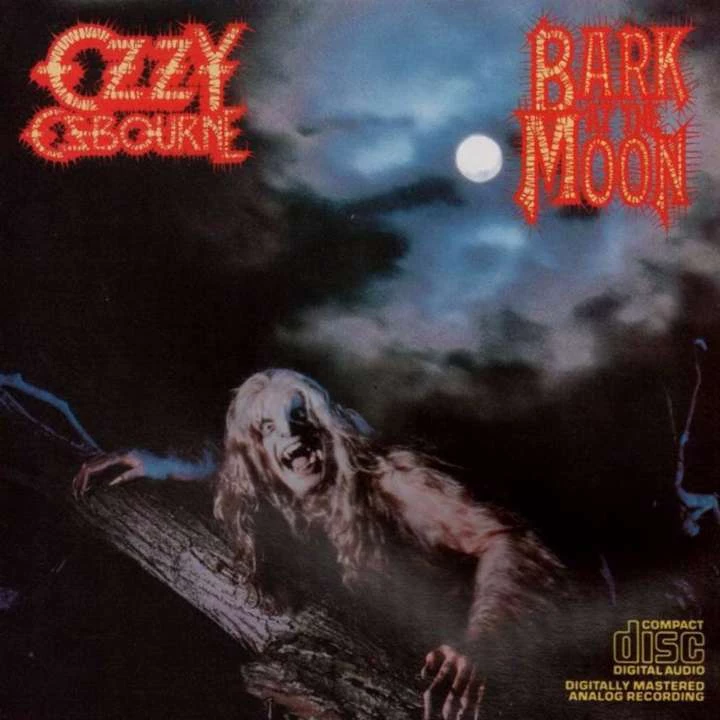
Ozzy Osbourne, 'Bark at the Moon'
Given the unenviable task of following Randy Rhoads, guitarist Jake E. Lee shows plenty of muscle, if (admittedly) far less panache. He joined bassist Bob Daisley as uncredited co-writers on an album that could never live up to the lofty standards of Osbourne's first two solo projects, but still provided its share of sturdy favorites.

Pearl Jam, 'No Code'
This 1996 album only went platinum, ending a run of multi-million-selling success for Pearl Jam that dated back five years. Blame their willingness to play with the grunge-rock formula, growing their sound by incorporating exciting elements of world music, garage rock and even psychedelia. In short, Pearl Jam lived up to the album title, pushing themselves in ways that clearly left large swaths of their fan base behind. At the same time, however, they created one of the band's most diverse and rewarding listening experiences.
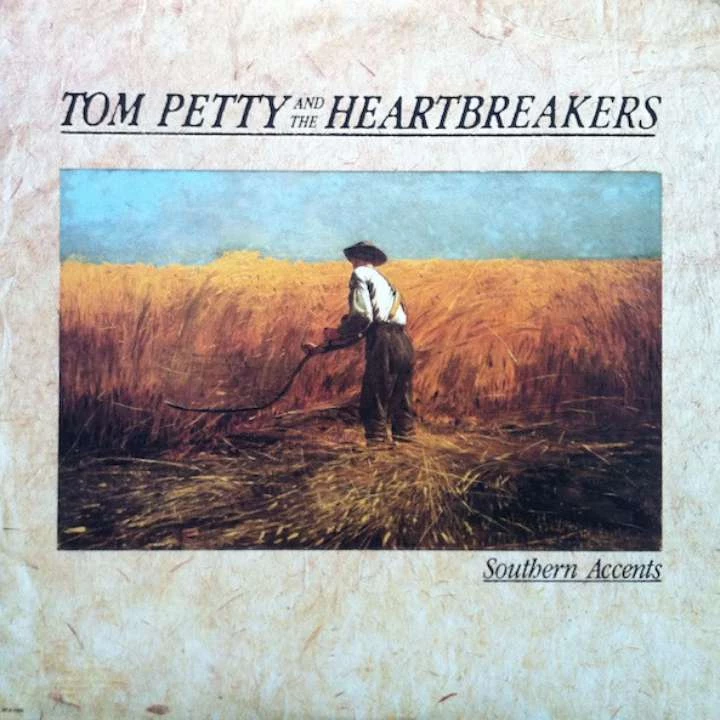
Tom Petty and the Heartbreakers, 'Southern Accents'
Originally conceived as a concept album, 'Southern Accents' is typically written off as a failed experiment after producer Dave Stewart changed out three songs for more pop-leaning material like the hit "Don't Come Around Here No More." But the original narrative pieces that remain, including "Rebels" and the title track, end up creating a balance that might not have been there before – while the Stewart-written fare kept 'Southern Accents' from becoming too heavy handed.

Pink Floyd, 'Animals'
A bracing reinvention of the Orwell theme from 'Animal Farm,' this project found Pink Floyd pushing back – and hard – against the looming, punk-driven idea that they had grown soft into middle age. At the time, this searing commentary on societal decay in the late '70s couldn't have seemed more different from its predecessors. Today, it's clear that 'Animals' represents the first stirrings of Waters' more political bent (one that would dominate his recordings past his association with the group he co-founded), even as it finds Richard Wright making his last important contributions of the Waters era.

Robert Plant, 'Manic Nirvana'
After hiding behind so many contemporary sounds from keyboards to sampling in the '80s, Robert Plant finally was beginning to get comfortable in his own skin. This album has every bit of the sex, humor and boundary-defying punch of Plant's best work, but with a more determined rock focus than he had even on the popular, but deeply modern, 'Now and Zen.'

The Police, 'Reggatta de Blanc'
Another band might have felt some pressure after a Top 10 U.K. debut. But the Police were determined to follow up 'Outlandos d’Amour' with something that remained in the moment, free of label influence and of overthinking. And so this LP was recorded in a matter of days and with either the songs at hand or updates of things from before. That approach gave the album a fizzy, very present feel – and the results (including “Message in a Bottle” and “Walking on the Moon”) didn’t just confirm their newfound place in the rock firmament. 'Reggatta de Blanc' turned the Police into budding superstars.

Queen, 'Jazz'
Arriving between two huge multi-platinum smashes, 'Jazz' remains another difficult-to-categorize Queen extravaganza – but this time with a twist. They seemed to be having one heck of a time, infusing the whole thing with so much humor that some might have mistaken 'Jazz' for being insufferably self-involved. Take the album for what it's worth, though: a joy-filled blending of the raw-boned sound of 'News of the World' with more of their typical bombast.

Rainbow, 'Long Live Rock 'n' Roll'
The last album to feature singer Ronnie James Dio, 'Long Live Rock 'n Roll' continued a commercial slide for Rainbow. Their first album was a Top 40 U.S. hit; this one could get no further than No. 89. To some degree, that's because it was forced to stand in the shadow of 'Rising,' their acknowledged career high point. Today, it's clear that 'Long Live' is every bit as good as its more famous predecessor – save for the presence of a "Stargazer"-worthy epic. Rainbow gave it a shot with "Gates of Babylon," however, and almost got there. "Kill the King," on the other hand, was already a concert staple – and justifiably so.

Ramones, 'Too Tough to Die'
The Ramones – finally – returned to their punk roots, after a lengthy period of pop-leaning, celebrity-produced, often utterly misguided attempts at mainstream stardom. Recorded with a visceral live spark that echoed their earliest recordings, 'Too Tough to Die' did, in fact, die a quick death on the charts. (At that time, it was the Ramones' lowest-ever charting release.) No matter. This is actually their last real brush with greatness, even if few noticed.
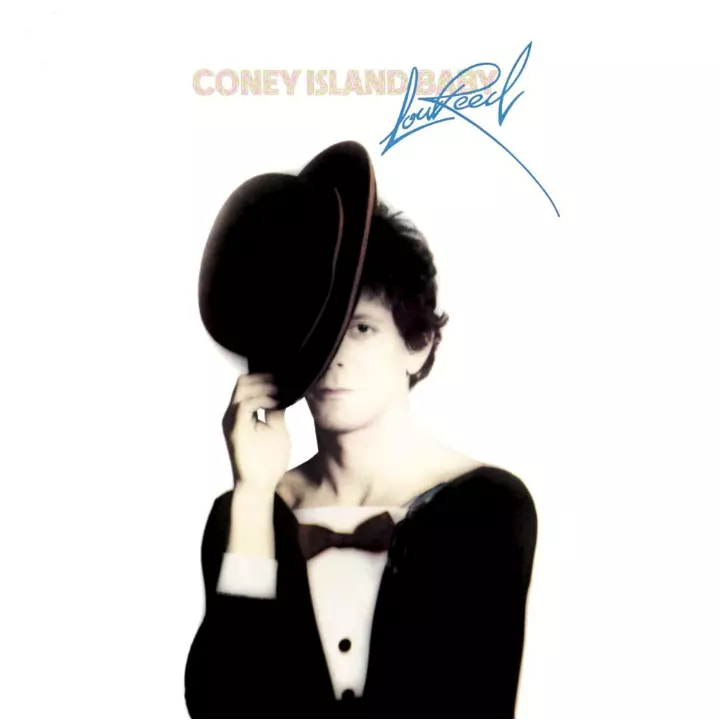
Lou Reed, 'Coney Island Baby'
Lou Reed touched on more personal emotions here, creating some of his most involving narratives while leaving aside a recent penchant for heavy-handed production touches. The problem was, this lean, well-crafted project arrived after the head-scratching noise experiment 'Metal Machine Music,' so a lot of fans had been scared away. 'Coney Island Baby' ran out of gas before reaching the Top 40, though it's the best album Reed had put out since 1973's 'Berlin' – and was far, far more accessible.

REO Speedwagon, 'R.E.O./T.W.O.'
Kevin Cronin's arrival seemed to have finally set Gary Richrath's REO Speedwagon on course for stardom – and, in fact, 'T.W.O.' produced a series of songs ("Golden Country," "Like You Do" and "Music Man") that became concert staples. Unfortunately for REO, and for this album's often-overlooked legacy, Cronin then split again for three years. His belated return finally sparked a series of platinum-selling albums beginning with 1978's 'You Can Tune a Piano, but You Can't Tuna Fish,' and this sophomore release was largely forgotten. The template for all of that success, however, can be found right here.

The Rolling Stones, 'It's Only Rock 'n' Roll'
'It's Only Rock 'n' Roll' can't claim the dark power and involving cynicism of their best albums with Mick Taylor, but the LP had far more raw energy than their earlier 'Goats Head Soup.' Credit the Rolling Stones for returning to more straight-ahead rock sounds, just before Taylor was replaced by Ronnie Wood. (The title track, in fact, features Wood on acoustic guitar.) Taylor had expected co-songwriting credits for "Till the Next Goodbye" and "Time Waits for No One." When that didn't happen, the stage was set for a lineup shift.

Rush, 'Hemispheres'
After stalling at No. 47 in the U.S., 'Hemispheres' tends to get forgotten. After all, Rush went on to release an unbroken series of Top 20 albums afterward – but only by moving away from the early prog constructions that still dominate this album. Thing is, they were still very good at it. Rush offer a moodier, side-long continuation of the "Cygnus X-1" theme from 'A Farewell to Kings' – and it's one of their very finest long-form compositions.

Santana, 'Caravanserai'
The best-known version of the Santana band was falling apart, largely because Carlos Santana was leading them toward fusion sounds. Soon, fans followed them out of the door. As the rock-meets-salsa influences melted away, so did the hit singles. But that wasn't what 'Caravanserai' was trying for anyway. Instead, this is one of Santana's most adventurous, rewarding side trips, as the guitarist explores a stunning new introspective complexity.

Scorpions, 'Animal Magnetism'
Shoehorned between better-known albums in 1979's 'Lovedrive' and 1982's 'Blackout,' this one tends to be ignored. Understandable, since Scorpions were still thought to be honing their newly revealed pop-metal sound in the wake of the Hendrix-ish Uli Jon Roth's departure. But every element of their burgeoning next-gen sound is already in place, even if the single charts remained unconquered until "No One Like You" crept up to No. 65 a couple years later.

Bob Seger, 'Beautiful Loser'
"Katmandu" is the one you hear on the radio, but 'Beautiful Loser' actually more often presupposes the very adult sense of honest reflection that eventually hurtled Bob Seger to fame. Songs like "Jody Girl" and "Travelin' Man" set the stage for the subsequent breakthroughs to come on 'Live Bullet' and 'Night Moves' in 1976. Then there's his offbeat, and very underrated cover of "Nutbush City Limits," originally made famous by Tina Turner.

Bruce Springsteen, 'We Shall Overcome: The Seeger Sessions'
As Springsteen's only album of cover tunes, it's probably little surprise that 'We Shall Overcome' – which features bar band-type folk-rock rave-ups of songs made famous by Pete Seeger – isn't often included among his best albums. What they're missing is one of Springsteen's most kinetic, heartfelt performances, as he recorded protest songs, work songs and spirituals with a pick-up band over two loose and raucous one-day sessions in 2005-06.

Ringo Starr, 'Beaucoup of Blues'
Unlike his standards-focused solo debut, Ringo Starr‘s sophomore genre record didn’t come as such a surprise. After all, this looked back to Beatles-era covers like Buck Owens’ “Act Naturally” and Starr’s own rootsy original “Don’t Pass Me By.” There’s an innate sadness in Starr’s voice that seems perfectly suited to this kind of music, and he completely inhabits the songs here. Just as important was the setting, and the people with whom Starr surrounded himself. Taking the concept seriously, he recorded in Nashville alongside a group of ace country pickers – and it all paid off.
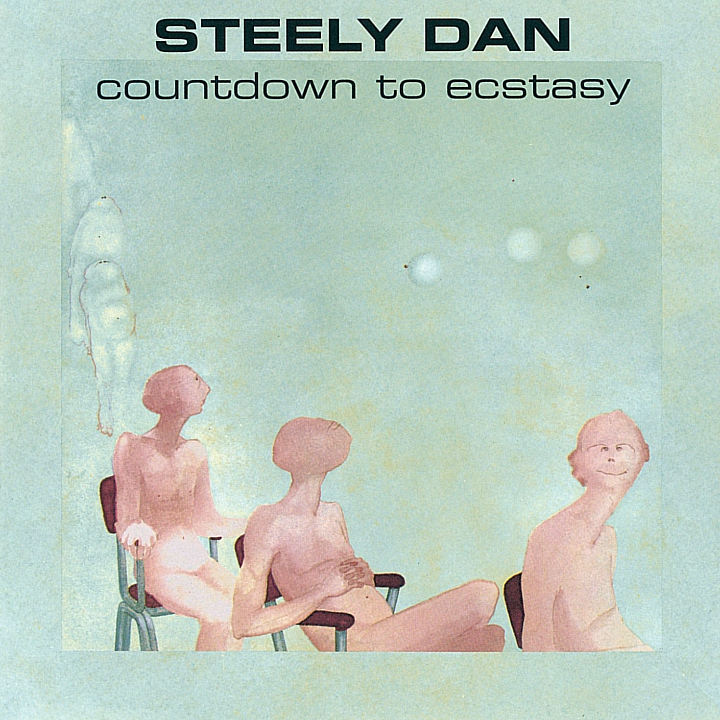
Steely Dan, 'Countdown to Ecstasy'
Donald Fagen officially took over for singer David ("Dirty Work") Palmer, but couldn't coax Steely Dan to a charting song on this sophomore release. History has been far kinder to this risk-taking amalgam of rock and jazz, however, as songs like "Bodhisattva," "Show Biz Kids," "My Old School" and "Pearl of the Quarter" have become staples either on the radio, in concert or on other singers' set lists.

Rod Stewart, 'A Night on the Town'
This album begins with a one-two punch of "Tonight's the Night (Gonna Be Alright)" and "The First Cut Is the Deepest," but remains perhaps largely anonymous otherwise. Likely, that's because it was seen as a hit-making but rather on-the-nose reprise of the earlier 'Atlantic Crossing.' Dig deeper, however, and there are noticeable nods back to his folky roots here, and some delectably grungy Faces-style rock to boot.

Styx, 'Crystal Ball'
The 1976 addition of Tommy Shaw after original guitarist John Curulewski’s sudden departure changed everything for Styx – even though 'Crystal Ball' could climb no higher than No. 66 on the charts. The subsequent ‘Grand Illusion’ then went supernova, leaving this admittedly transitional album further and further behind. Styx's run eventually stretched to five consecutive platinum Top 10 smashes. If you turned into a big Shaw fan along the way, however, it's worth noting that all of the best songs on 'Crystal Ball' are by the new guy.
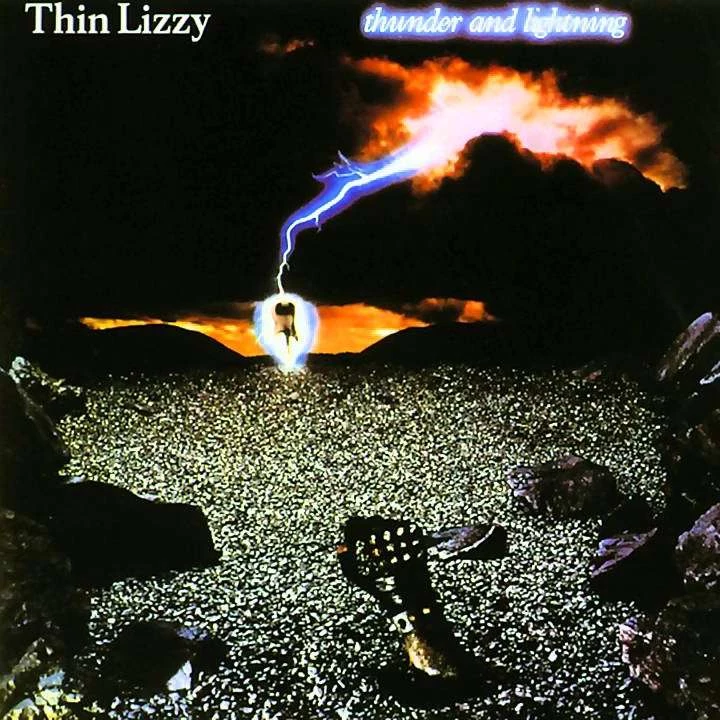
Thin Lizzy, 'Thunder and Lightning'
Thin Lizzy sadly said goodbye with this album, but not before unleashing a tough and more guitar-oriented outburst. There are occasionally unwanted nods to '80s-era conventions like synths. Despite that, Thin Lizzy hadn't offered a more consistent song cycle since their '70s-era heyday. By 1986, just three years later, frontman Phil Lynott had tragically died.
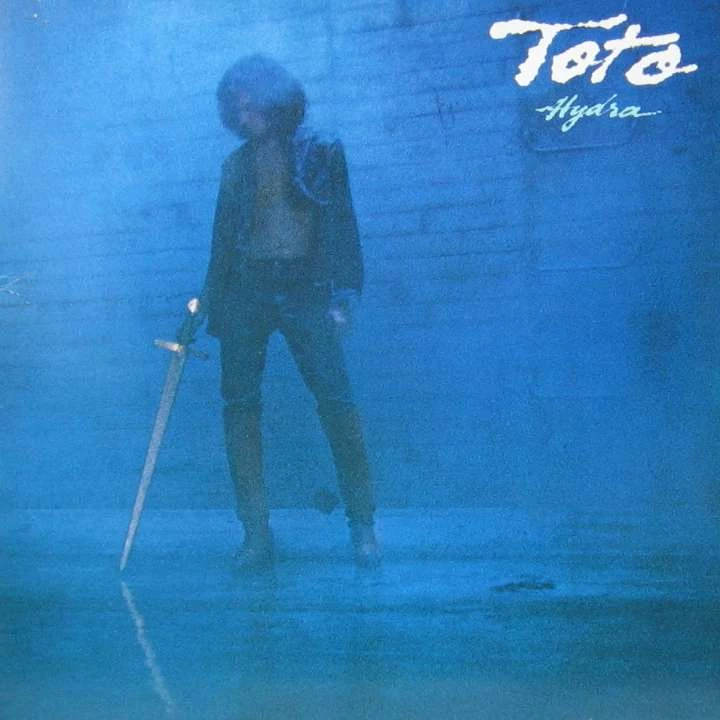
Toto, 'Hydra'
'Hydra' still provides one of the most varied and complex peeks into the muse of Toto. Known these days for their smooth balladry – even this sophomore release’s biggest single was “99,” with its outer-space sensuality – Toto displayed a startling range. From progressive rock to R&B, from propulsive pop to jazz-inflected fare, from arena rock to (yes) power ballads, there was little Toto wouldn’t try – and even less they wouldn’t conquer.

Twisted Sister, 'Under the Blade'
This is the record that earned Twisted Sister their big-label deal. That said, while 1984's 'Stay Hungry' was the more popular album, selling three million copies, this earlier debut is their more hard-rocking one. Recording in England with UFO bassist Pete Way during the emergence of the New Wave of British Heavy Metal, 'Under the Blade' focused on Twisted Sister's early club-days set list, with a raw and randy sound to match.

U2, 'Zooropa'
U2 ended up getting way weirder after this, and maybe 'Zooropa' was the nexus point – since it could be pretty weird too. (See "Lemon," right?) It's hard to blame the album, however, since 'Zooropa' was thrown together while on tour – and that seat-of-the-pants effervescence continues to resonate. Along the way, U2 allow themselves to echo earlier triumphs ("Stay [Faraway, So Close!]") even as they try completely new things. This was never meant to be a serious statement and, with a band so often terminally bent on earnestness, the new approach still holds no small amount of charm.

Van Halen, 'Diver Down'
Despite seeming like a throwaway filler project (five originals were matched with five more covers and two minute-long instrumentals), 'Diver Down' is actually endlessly fun – an album that burns on the clean fuel of summer joy. Reason: Even the covers showcase a band at the height of their considerable powers, and one that it seems was just itching to party after the more serious themes of the preceding 'Fair Warning.' Mission accomplished.
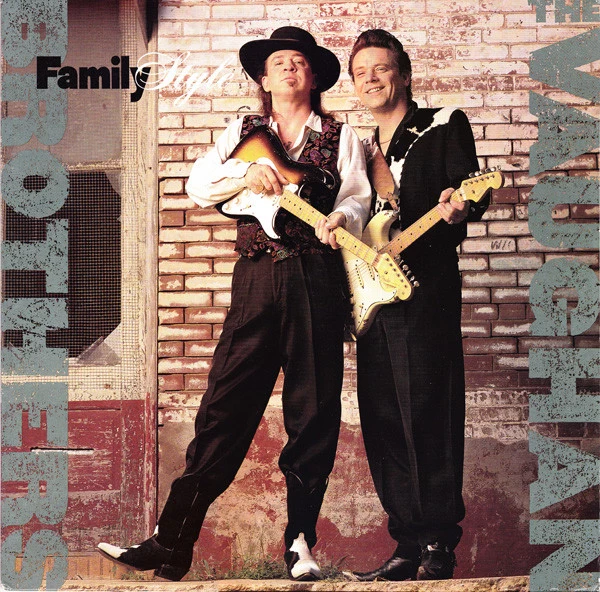
The Vaughan Brothers, 'Family Style'
A low-key, yet unforgettable goodbye. Though it sold well in the immediate aftermath of Stevie Ray Vaughan's death, 'Family Style' seems to have disappeared from the typical conversation about his legacy. It's a shame, since such an ingratiating sense of camaraderie – to say nothing of a passion for blending blues, pop and soul – permeates the proceedings. And what better way to end things than with "Brotherhood," a song where the Vaughan brothers literally hand the guitar back and forth between them as the tape rolls?

The Velvet Underground, 'The Velvet Underground'
With this typically forgotten showpiece of restraint, the Velvet Underground's greatness was confirmed. 'White Light/White Heat' had been like a punch in the throat, which made the succeeding self-titled album's more introspective, darkly subtle approach all the more stunning. Nobody bought this one either. But 'The Velvet Underground' uncovered the flip side to the band's angry-outsider attitude, illustrating their capacity to work across a broader range of emotions. It still serves as an intriguing, necessary counterbalance to everything that came before.

Joe Walsh, 'The Smoker You Drink, the Player You Get'
It was a hit at the time, and produced an introductory Top 40 hit single in "Rocky Mountain Way" that remains a concert staple. But Joe Walsh's 'The Smoker You Drink, the Player You Get' is still loaded with scores of completely overlooked deep-cut moments. Moreover, the best of them ("Book Ends," "Days Gone By," "Dreams") have nothing to do with the party-boy, goofball image he carefully cultivated in the years to come.
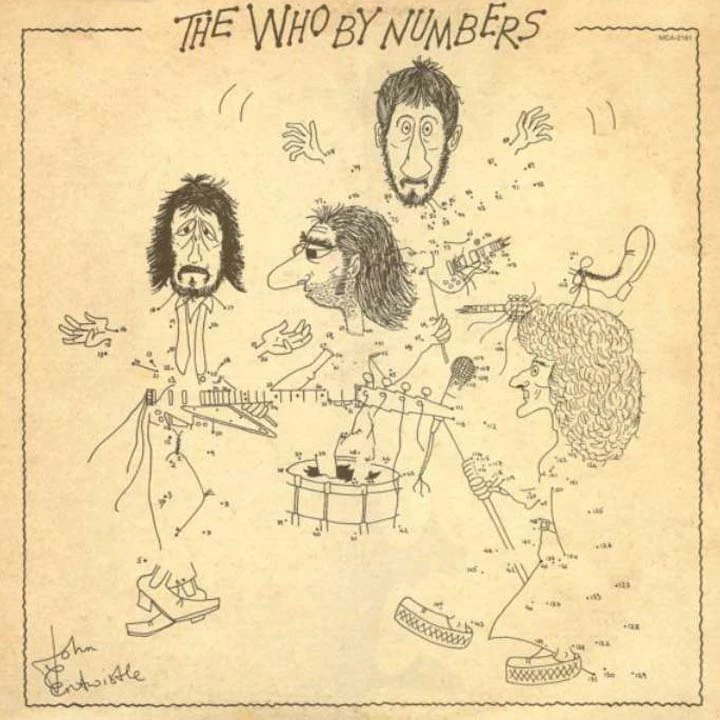
The Who, 'The Who by Numbers'
After releasing two sprawling concept albums in 'Tommy' and 'Quadrophenia,' with another album ('Who's Next') that had grown out of a long-form idea in between, this more typical song cycle must have seemed like something of a letdown. But the serious, middle-aged themes found on 'The Who by Numbers' continue to resonate well past its original era. And we now know, of course, that there'd only be one more album from the Who's ferocious original foursome.

Yes, 'Drama'
The first recording Yes undertook without Jon Anderson was also the first with current keyboardist Geoff Downes, who took over after one of Rick Wakeman's many departures. Downes' Buggles bandmate Trevor Horn became their singer, as Yes began building a bridge between well-established progressive structures of the '70s and the radio-ready prog-pop that loomed in the decade to follow. For Steve Howe fans, 'Drama' is also one of the most guitar-focused recordings in Yes' lengthy history.

Neil Young, 'Le Noise'
Neil Young remained restless through a period of loss, imbuing the modernistic, reverb-soaked 'Le Noise' with a kind of anti-melancholy. Recorded alone with his guitar in an atmosphere that sounds nothing like the typical unplugged session, this textured, live-sounding project finds a happy medium between Young’s acoustic work and his more muscular full-band rock music.
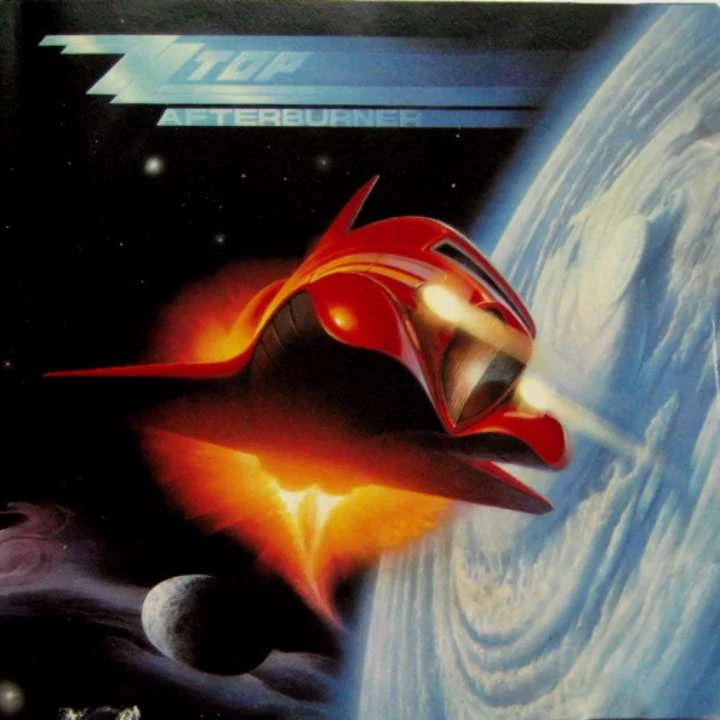
ZZ Top, 'Afterburner'
ZZ Top upped the ante on the modernization that drove 'Eliminator' up the charts, as stabbing keyboards, mechanized drums and various computerized loops propelled favorites like “Stages,” “Rough Boy," "Sleeping Bag" and “Velcro Fly.” For longtime fans, there was “Woke Up.” All scroungy licks and lecherous intent, it connects directly with the best of early ZZ Top.